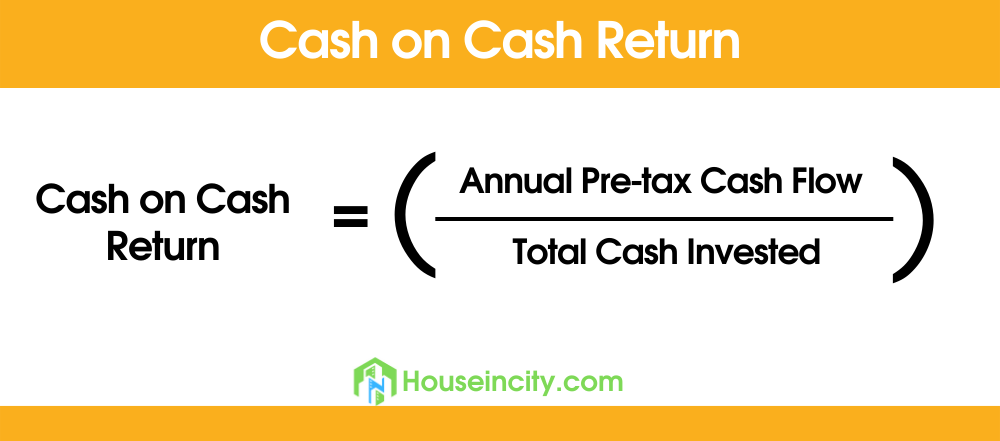Do you know what cash on cash return is? If not, you should learn about it. This metric is one of the most important ones to consider when investing in real estate.
This article will discuss what cash on cash return is and why it matters. We will also provide some examples to help illustrate how this metric works. So, if you’re interested in learning more about cash on cash return, keep reading!
What is Cash on Cash Return?
Simply put, it is the cash flow from a rental property after subtracting all operating expenses, divided by the total amount of cash invested. So, if you invest $100,000 in a rental property that generates $12,000 in annual cash flow after operating expenses, your cash on cash return would be 12%.
Why Does Cash on Cash Return Matter?
There are a few reasons why cash on cash return is essential. First, it allows you to compare different investment opportunities side by side. For example, if you’re considering two properties and one has a higher purchase price but also a higher potential return, the property with the higher return might be a better investment.
Additionally, cash on cash return is a good metric to use when deciding whether to finance a property or pay cash. If you’re financing, your loan will have an interest rate that will reduce your overall return. So, if you’re looking at two properties and one has higher cash on cash return but is being financed, the property with the lower return but no loan might be a better investment.
Examples of Cash on Cash Return
Example #1
Let’s say you’re considering investing in a rental property. The property costs $200,000 and is projected to generate $24,000 in annual cash flow after operating expenses. This means that your cash on cash return would be 12%.
Example #2
Let’s say you’re considering investing in a different rental property. This property costs $200,000, but it is projected to generate $36,000 in annual cash flow after operating expenses. This means that your cash on cash return would be 18%.
As you can see from these examples, the property with the higher cash on cash return might be a better investment even though both properties have the exact purchase price.
How to Calculate Cash on Cash Return
The cash-on-cash return formula is pretty simple. First, you take the annual cash flow from the property and subtract all operating expenses. Then, you divide that number by the total amount of cash invested. Below is the cash on cash return formula:
Cash on cash return = Annual net cash flow / Invested equity
For example, let’s say you’re considering investing in a rental property. The property costs $100,000, and it is projected to generate $12,000 in annual cash flow after operating expenses. To calculate the cash on cash return, you would take $12,000 and divide it by $100,000. This would give you a return of 12%.
Is Cash on Cash Return the Same as ROI?
No, cash on cash return is not the same as ROI. ROI, or return on investment, is a broader metric that considers both the cash flow from a property and any appreciation that might occur. So, if a property increases in value over time, that will increase your ROI even if the cash flow remains the same. Cash on cash return, on the other hand, only looks at the cash flow from a property.
While both ROI and cash on cash return are essential metrics to consider when investing in real estate, they are not the same.
What’s a Good Cash on Cash Return Rate?
There’s no easy answer to this question. The “right” Cash on Cash Return rate depends on many factors, including your goals, risk tolerance, and investment strategy.
That being said, most investors aim for a return of at least 12%. This is generally considered to be a good starting point. However, keep in mind that your target return will likely be higher if you take on more risk.
It’s also important to remember that cash on cash return is just one metric to consider when evaluating an investment property. It’s not the be-all and end-all. You’ll also want to look at things like cap rate, internal rate of return, and return on investment.
The bottom line is that cash on cash return is a valuable metric to use when assessing rental properties. It’s relatively easy to calculate and can give you a good idea of the potential return on your investment. Just remember to consider other factors as well.
The Bottom Line
Cash on cash return real estate is an important metric to consider before investing. It allows you to compare different investment opportunities and make informed decisions about which ones are the best for you. So, if you’re considering investing in rental property, calculate the cash on cash return before making your final decision.

